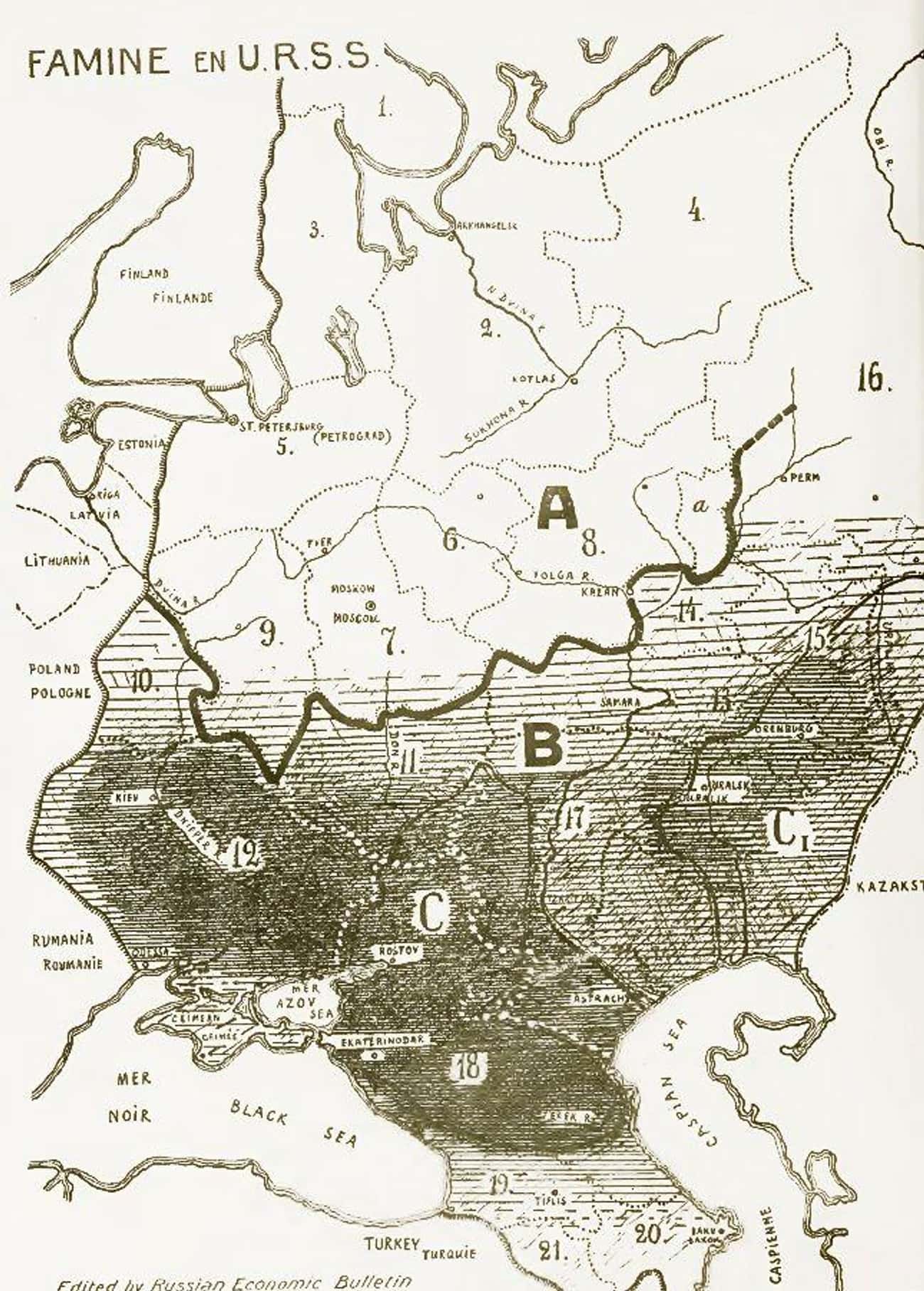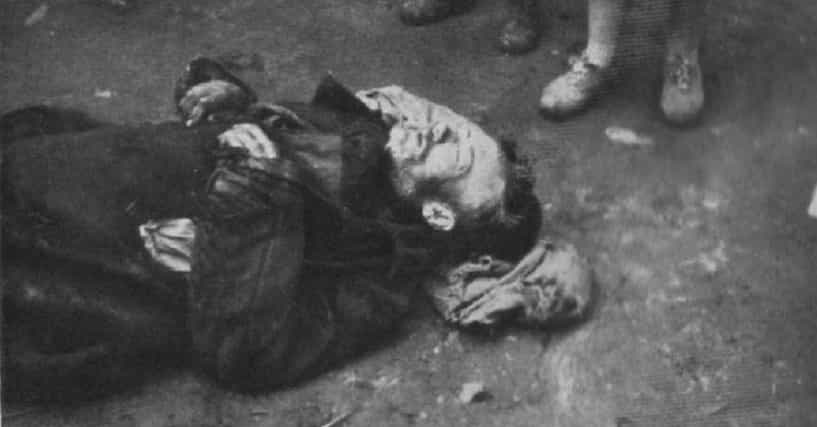Holodomor is an example of how prejudice and a desire to dominate and control a particular ethnic group can lead to the misuse of power, mass oppression, and genocide.
In 1932 and 1933, millions of Ukrainians were killed in the Holodomor, a man-made famine engineered by the Soviet government of Joseph Stalin. The primary victims of the Holodomor (literally “death inflicted by starvation”) were rural farmers and villagers, who made up roughly 80 percent of Ukraine’s population in the 1930s. The Holodomor, or “death by hunger,” was a little-known genocide that struck right before the Holocaust.
While it is impossible to determine the precise number of victims of the Ukrainian genocide, most estimates by scholars range from roughly 3.5 million to 7 million (with some estimates going higher). The most detailed demographic studies estimate the death toll at 3.9 million. Historians agree that, as with other genocides, the precise number will never be known.
Yet, just like with the Holocaust, there is a disturbing amount of Holodomor denial, even in modern times. Only 16 countries worldwide have formally acknowledged that the tragedy was indeed a genocide, and the US is not one of them. President Barack Obama made a memorial speech in 2016, acknowledging “one of the most horrific man-made tragedies in modern history.” The US Senate and Congress have passed resolutions declaring that “Joseph Stalin and those around him committed genocide against the Ukrainians in 1932-1933.”
To this day, Russia denies that the government was behind the famine. But as Russia’s tension with Ukraine shows, the relationship between the two countries has never been a peaceful one.
Soviet Authorities Forcibly Removed Food From The Kulaks, Ukrainian Farmers

The Kulaks, which literally translates to “fists” in Russian, were successful farmers who resisted Stalin’s collectivization policies, which they considered to be a return to serfdom. The Soviet authorities branded them as enemies of the working class, and set out to destroy them. “Now we have the opportunity to carry out a resolute offensive against the kulaks, break their resistance, eliminate them as a class and replace their production with the production of kolkhozes and sovkhozes,” Stalin said. Kolkhozes and sovkhozes were the collective communist government farms.
By the 1930s, Stalin implemented his dekulakization policy, where Soviet authorities forcibly took land and food away from the farmers, and sent many of them off to Siberia. The rest were left to die of starvation.
The Ukrainian Borders Were Sealed After Their Food Was Stolen

Many Starving People Turned To Cannibalism

Out of desperation; starvation drove people to lose their humanity and turn on each other many Ukrainians turned to cannibalism. It was all too common for parents to forsake their children and eat them, only to later die of starvation themselves, wrote Yale Historian Timothy Snyder in his book, Bloodlands: Europe Between Hitler and Stalin.
Human flesh even became a commodity on the black market. Despite the desperate times, cannibalism was still punishable by law. Some 2,505 people were arrested and charged with cannibalism during the Holodomor.
Alternative Food Methods Included Loafs Made Of Nettles

People resorted to all sorts of alternatives in finding food during Holodomor. They resorted to making “weed loafs,” composed of nettle leaves and other weeds, to sustain themselves as best they could. People also boiled horse hides, and even ate manure. Children were even reported eating their own excrement out of desperation. Even worse, eventually the starving peasants turned on each other.
Stalin’s Collectivization Policy Was Meant To Destroy Ukrainian Nationalism

The origins of the famine lay in the decision by Soviet leader Joseph Stalin to collectivize agriculture in 1929. Teams of Communist Party agitators forced peasants to relinquish their land, personal property, and sometimes housing to collective farms, and they deported so-called kulaks—wealthier peasants—as well as any peasants who resisted collectivization altogether. Collectivization led to a drop in production, the disorganization of the rural economy, and food shortages. It also sparked a series of peasant rebellions, including armed uprisings, in some parts of Ukraine.
As it was written in Proletarska Pravda in 1933, it was also meant to “destroy the social basis of Ukrainian nationalism.” Indeed, after the Holodomor, one of its principal architects, Pavel Postyshev, said, “We have annihilated the nationalist counter-revolution during the past year, we have exposed and destroyed nationalist deviationism.”
Estimates Of The Holodomor Death Toll Range As High As 20 Million

How many people actually died in the Holodomor? Even today, it remains a contested question. Historian Timothy Snyder believes that about 3.3 million people died. In a statement from the Director General of the National Museum Memorial of Victims of the Holodomor, he claimed that historians agreed approximately seven million died within the Ukrainian border, and three million outside the border. Horrifyingly, past figures have estimated the total death toll upwards of around 20.6 million.
Journalist Walter Duranty Won A Pulitzer Prize For Denying The Holodomor

Walter Duranty was the New York Time’s Moscow correspondent during the Holodomor. However, the man who coined the term “Stalinism” was nothing more than a puppet for the communist dictator. He brushed off the Holodomor as “mostly bunk,” adding that, “You can’t make an omelet without breaking eggs.”
He was pressured into downplaying the famine, and was even praised for his reporting by Stalin himself. In 1934, he won a Pulitzer Prize for his false reporting on the Holodomor, but his writing left a shameful legacy. One journalist at the Times called his work “some of the worst reporting to appear in this newspaper.”
There Has Been A Lot Of Denial Of The Holodomor

After the end of the Holdomor in 1933, the Soviet government tried to suppress evidence of the state-caused famine. Stalin even banned the publication of census data. The Kremlin has never acknowledged the genocide. They rejected the label, claiming it was a “nationalistic interpretation.” Even former Ukrainian president Viktor Yanukovych, claimed it was “incorrect and unjust” to call Holodomor “the genocide of a certain people.”
The Holodomor Was First Recognized As A Genocide In 2006

Fourteen countries have formally recognized the Holodomor as a genocide. The United States is not one of them. Australia, Canada, Mexico were among the first nations to acknowledge the genocide when supplied with information from the Ukrainian Ministry for Foreign Affairs in 2006. Even the Vatican has recognized it. Five additional countries have officially claimed that the Holodomor was a criminal act.
Every November, Ukrainians Observe Holodomor Remembrance Day

Every fourth Saturday of November since 1998, Ukrainians observe Holodomor Remembrance Day in remembrance of the victims of the genocide. Flags fly at half-staff, and the media is limited in airing entertaining programs.
Holodomor Remembrance Day has also been observed around the world. Canada had an entire Holodomor Remembrance Week in 2008. In 2009, US President Barack Obama released a statement regarding Holodomor Remembrance Day:
“…[R]emembering the victims of the man-made catastrophe of Holodomor provides us an opportunity to reflect upon the plight of all those who have suffered the consequences of extremism and tyranny around the world.”
The History Of Russia And Ukraine Is Complex And Brutal

Located “at the crossroads of Central Asia, Russia, Europe and the Black Sea,” the area encompassing Ukraine, Russia, and Crimea has always been complex and faced myriad challenges as it attempts to reconcile autonomy with democracy and efficiency.
Although many factions of people spanning these borders share various traits, as well as a common culture and history, there has been a harsh history of conflict as each region struggles to maintain its own nationality. Ukraine has long wanted its own autonomy apart from Russia, which Russia has never supported. Russia frequently attempts to invade or annex various parts of its regional family, and in neighboring Crimea, which is part of Ukraine, the Russian Federation forcibly took control of the republic in 2014.
The Annexation of Crimea sparked conflict between Ukraine and Russia, which devolved into warfare between the two states. Corrupt elections oversaw Russian puppets installed in Ukrainian higher office in order to create trade deals, and innocent civilians have lost their lives. A brief ceasefire in 2015 was quickly violated. Hopefully, one day the animosity at the root of the Holodomor will be peacefully resolved.









